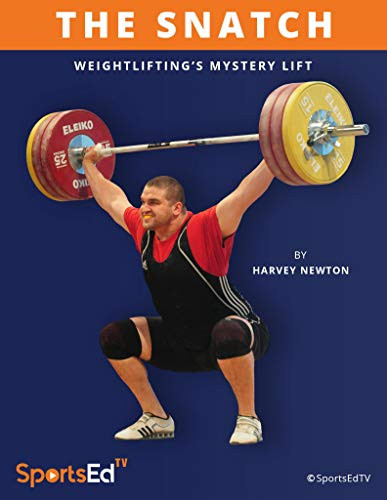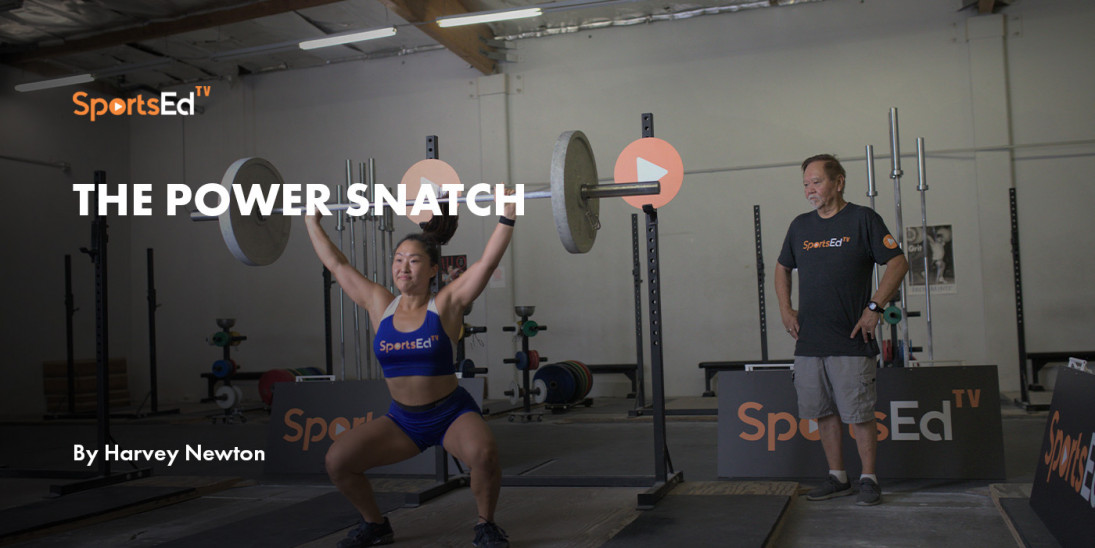Must-own Sports Books, Weightlifting
Welcome and thanks for visiting...

The Snatch: Weightlifting’s Mystery Lift

Introduce a newcomer to the first of competitive weightlifting’s two lifts, the snatch, and the common reaction is, “What just happened?”
An experienced lifter might know what happened but he or she also very likely knows there are ways to improve.
Either way, weightlifters will learn much from the experience of author Harvey Newton in this when they own his The Snatch: Weightlifting’s Mystery
 Click Here To Check Out The Book
Click Here To Check Out The Book
A competitor himself, Newton was head coach of the USA Olympic Weightlifting Team in 1984, he was the first national coach of the USA Weightlifting team (1981-1984) and served as its executive director for seven years (1982-1988).
From lift-off to lockout overhead, the snatch takes less than one second to execute. This is simply too fast for the average person to fully appreciate and understand, much less imitate.
In a squat snatch (the most common method used) with the barbell overhead, the lifter is also in a very precarious position that may quickly lead to failure, even with a lightweight.
A new lifter may now quickly gain mastery of the snatch lift (power, squat, split) by following the step-by-step instruction offered in The Snatch: Weightlifting’s Mystery
This 58-page ebook also includes top-quality video instruction from the SportsEdTV weightlifting library and a month-by-month example of a possible training program to learn to snatch.
Here’s how Newton introduces his work that SportsEdTV editors have added to their Must Own Sports Books collection:
From the Introduction
“The various forms of the snatch and other explosive lifts head the list of exercises often prescribed to athletes, even if they are not ready for this form of advanced training. This e-book is designed to provide solid instructional material to assist athletes and coaches in learning and performing the snatch systematically and properly, whether for strength training or competitive weightlifting.
The age-old weight room advice, "Do explosive lifts," while well intended, may cause a number of problems. The snatch is what is popularly referred to as an explosive lift. That is, it must be performed at a high rate of force development to be successful. Explosive lifting makes sense for sports like football, volleyball, track and field, and many others that depend on bursts of explosive power.
However explosive lifting is an advanced method of training. It is NOT appropriate for novices in the weight room to begin with advanced training methods. Beginners should focus mostly on developing an efficient technique for explosive lifting and creating greater strength through simpler, more basic exercises for at least the first six months. The Olympic sport of weightlifting now consists of only two lifts, the snatch and the clean-and-jerk. Both moves require several physical attributes, including strength, power, coordination, and flexibility, to be highly successful. Training these lifts is a must for the weightlifter, but moving heavy objects with blinding speed makes sense for non-weightlifters, as well.
But these two lifts, particularly the snatch, require a good bit of technique to explosively get a barbell overhead. Although weightlifting exercises are currently popular with most strength coaches, a good percentage skip the snatch completely due to its perceived technical complexities.
Today, it would be rare to see someone enter a weightlifting meet with the simple brute strength that was often present in the sport's early days. At that time, the snatch was often viewed as simply another lift that needed to be done. The press was considered the real strength lift, although a failure to enforce a strict style led to its elimination from organized competition in 1972. The clean-and-jerk, the King of Lifts, allowed for the most weight to be lifted, but it also required at least some technique to succeed. Nearly all present-day competitors lift with more advanced technique skills than those exhibited by lifters in years past. This is especially true in the snatch. However, coaches have rediscovered many ways in which to utilize the snatch, even with athletes lacking the skill or coaching to perform the snatch efficiently.
Nothing is as basic as reaching down and simply pulling the bar overhead. Over time lifters have figured out all sorts of ways to be more efficient, which leads to lifting heavier weights. In the early days, this included moving the feet into a split receiving position so the lifter could catch a heavier barbell overhead in a lower position. Later this evolved into a squat style of snatching, the type of lift seen almost exclusively today.
Although most people don't take to the snatch immediately, with a proper understanding of efficient technique, along with proper practice and feedback, nearly anyone can become efficient at the snatch lift. That's the purpose of this ebook and I hope you find the following pages to be engaging and informative.”








